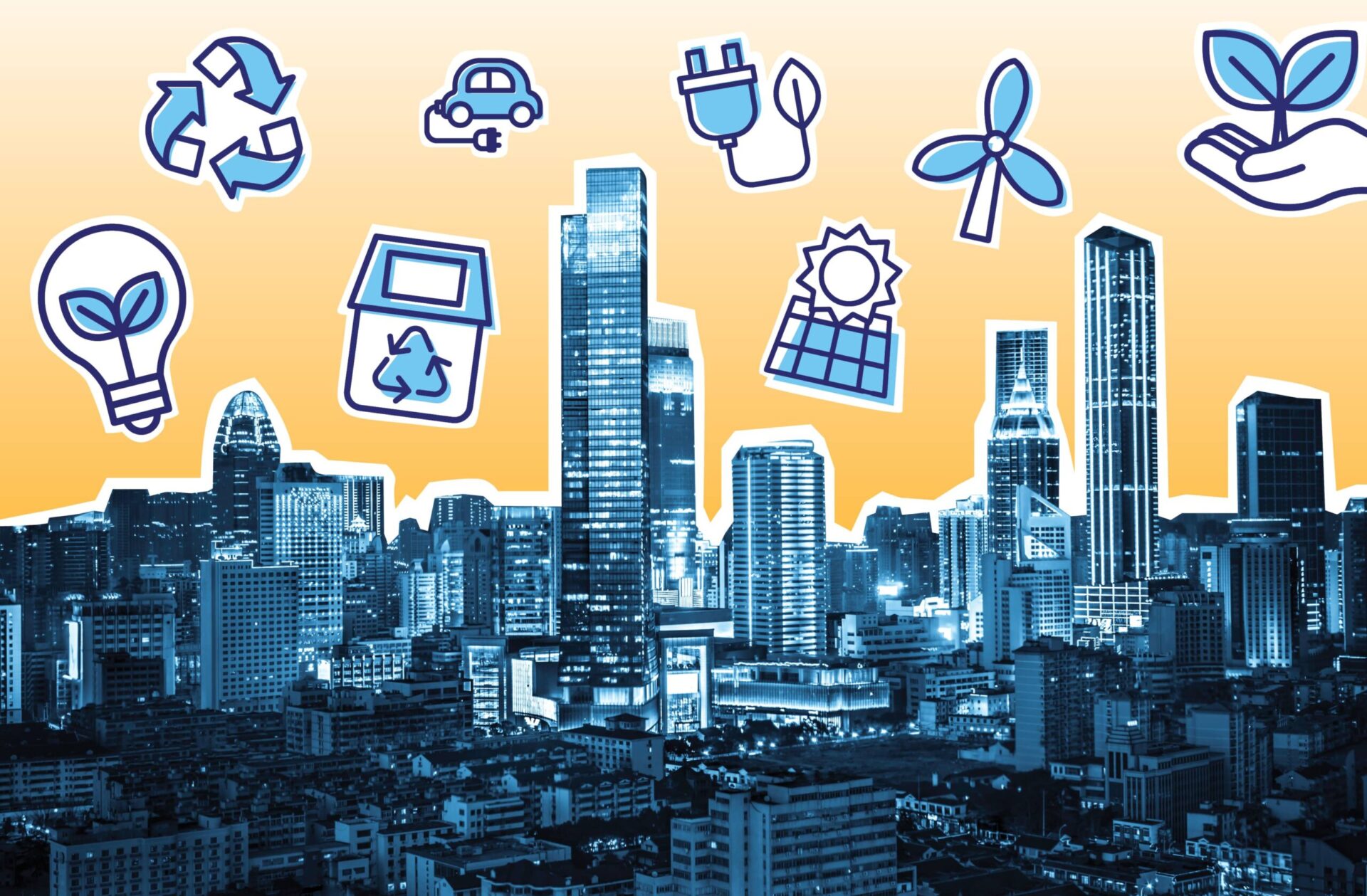Sustainable Architecture: What Is It And How Is It Addressing Climate Change?
ustainability has become the jargon that has permeated numerous businesses. With construction accounting for a significant portion of global energy consumption, it is no wonder that sustainable architecture has emerged as a key concern in the design of buildings and cities. Architects have jumped on the bandwagon and have begun creating green building designs that thrive in shape and structure and created integrated solutions that include environmental aspects. Sustainable architectural ideas are increasingly being included in public design concepts. While affordability is always a major priority for city development planners, it is equally essential to bear in mind that investing more upfront in sustainable strategies can save money in the long run and improve air quality, well-being and contribute to a more regenerative future.
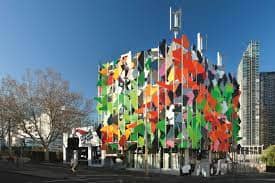

The realm of design and architecture has a huge part in deciding not just the status of the natural habitat but also the health of environmental sustainability as a whole.
With the construction sector remaining heavily reliant on fossil fuels, there is increasing pressure on the architecture industry to pursue greener and sustainable approaches. Innovative design and construction approaches and updated ways of thinking are effective ways to sustain the natural environment, which have evolved over the years.
To have a better understanding of the topic. It is critical to explore what precisely sustainable architecture means.
Because it’s time to think about sustainability, green living, and our environment!
What Is Sustainable Architecture?
As a general notion, sustainability is defined as progress, growth, or advancements that satisfy the requirements of today without jeopardizing future generations’ ability to meet their needs.
When applied to architecture, it relates to design that promotes a healthier environment while minimizing detrimental effects on the environment, energy usage, and human resource utilization.
Hence, sustainable, green, or environmental architecture should be clearly evident in the construction materials, processes, design, concept, resource utilization, and overall design of a structure. The layout must also allow for sustainable operation throughout the life cycle of a building, including its eventual disposal.
While it must be useful and visually pleasing, the building must also be built with the goal of ensuring long-term productivity, energy efficiency, and sustainability.
Types of Sustainable Architecture
Geographical Element
The sustainable architectural design would include geographical elements such as a lot’s exposure to the direction and degree of sunshine during the day and seasons while preparing to build homes on a property. This solar component may be viewed as both a possible negative and positive influence on the overall energy consumption of the construction. Solar panels can be mounted on the roof if sunlight is abundant from one side.
One such great example is – The Bullitt Center, built by Robert Hull. It is an outstanding structure in terms of efficiency since it has its own power plant and its very own waste management facility, for lack of a better term. Nothing in the Bullitt Center hasn’t really been done before; they just haven’t been put together in such a way as to attain zero energy. You could lower the energy demands in any ordinary building and apply high-efficiency technology to make it net-zero-ready. The final thing visitors notice about the Bullitt Center is the addition of resources, like solar panels.
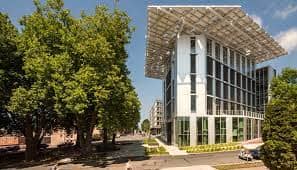
Construction Material
Another form of creating green buildings depends on the construction material. The building sector is heavily reliant on fossil fuels, resulting in a significant carbon impact. Designers have resorted to biodegradable materials to make the construction process more environmentally friendly.
David Benjamin’s “The Living“ is formed of mycelium, which is the vegetative portion of a fungus. It is composed of thousands of interwoven strands, resulting in a very robust substance when dried. Organic bricks may be created and utilized in the building when coupled with farm waste in moulds. The bricks are created without any carbon emissions or waste, and they may degrade and return to the carbon cycle after their intended usage. Alternative biodegradable materials used in construction include cork, bamboo, and desert sand.
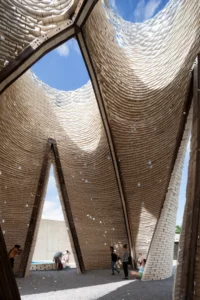
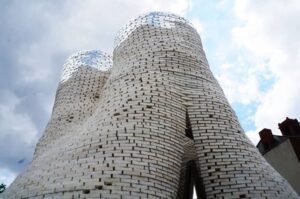
Landscaping
Another form of design method used in sustainable architecture is landscaping. Plants that are better adapted to the local environment can reduce water use while maintaining topsoil. Mowing may be eliminated by replacing standard grass lawns with ecological plantations of native grasses and vegetation.
Suzlon One Earth Campus, Pune by Architect Christopher Benninger | India’s Greenest Building
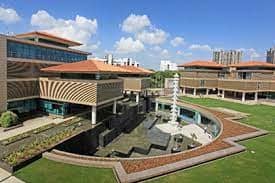
Each element, from the HVAC to the photovoltaic solar roof of the atrium, is designed with careful attention to maximizing the use of green energy. Another intriguing aspect is the landscape, incorporating Xeriscaping and very efficient water management technology. The fundamental element of the landscape design is reflective pools, which, in addition to the natural beauty of the campus, form a pleasant microclimate in the surrounding buildings.
Rajiv Gandhi International Airport, Hyderabad by Noric Architect and GMR officials | India’s Green Buildings
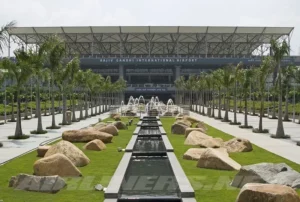
The GMR airport is the first in Asia and the second in the world to receive a LEED silver grade. Greenhouse emissions management, carbon footprint minimization, energy and material efficiency, green supply channel, clean energy usage, waste, and water usage reduction and management are among the considered environmental parameters.
These are just a few prominent examples of sustainable architecture; many more fabulous examples have impressive architecture and features.
Conclusively, sustainable buildings can play a role in preventing climate crises. An architectural team that knows the intricacies, needs, and problems of developing a sustainable building will help mitigate the challenges and offer more proven solutions that provide crucial environmental advantages and cost-efficiency.
The industry for green architecture is expected to double in the coming years as more individuals become aware of the adverse effects humans have made to the earth through substantial use of mineral resources, artificial products, pesticides, etc. Although it’s not a very prevalent concept in India, it is supposed to be advantageous for expansion, growth, and sustainability.

